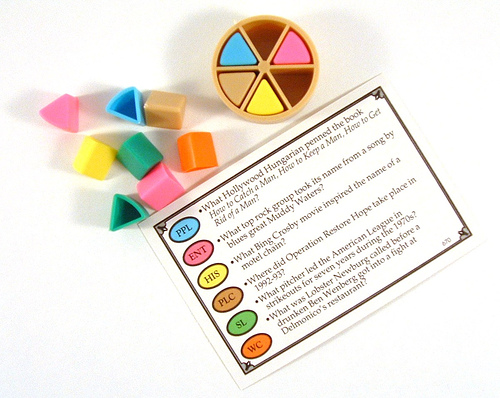In the lingering spirit of April Fools’ Day, consider the famous hoax Web site, Save the Pacific Northwest Tree Octopus. Now, I am not particularly enamored of using hoax sites to teach evaluation. Identifying a popular hoax is a whole lot easier than dealing with the more subtle types of misinformation students need to learn to avoid. However, the tree octopus site is well-constructed, and we can use it to practice reflecting on how common sense and background knowledge combine to set off the crap detector. After all, many students have seen or heard about some octopus in the past, and have the ability to surmise that one probably does not live in a tree. My experience is that most students encountering the tree octopus for the first time say, “That’s weird!” giving a great opening for discussion about how when common sense alarms go off, it is good to dig further.
Such a lesson can be both fun and empowering. The message is not, “There is so much misinformation out there and you have been wrongly believing it all,” but rather, “You already possess many of the tools you need to tell good information from bad, and by being observant of the world around you, you can develop even more!”
It is specifically this empowerment through observation and the curiosity it kindles that I think we need to pass on to our students; it drives both better search skills and the development of background knowledge. To me, these processes are one and the same. As long as we teach students to interact meaningfully with the information they encounter--to really see their results pages, and really see their sources--students will continue to build on their foundation of knowledge throughout their lives.
If you are an educator, here are some things you can do to help students practice simultaneously enriching their background knowledge and searching effectively for what they need to know:
- Consciously drawing on terms from trusted sources to write stronger searches. Model using textbooks, selected articles, etc., to identify terms that are unique and relevant to that topic. Then, practice remembering terms used in class reading and try searching for them. See how using “terms of art” makes finding what you want even faster. This experience can draw on scholarly topics, or on everyday popular topics, such as knowing the term cheats to refer to expert tricks for succeeding at video games.
- Thoughtfully journaling the process of using stepping stone resources. Model for students the process of learning from sources you find and folding what you learn back into your search process. This strategy may include both discovering new vocabulary words that make stronger search terms, and encountering new facts or ideas and specifically choosing to explore them further. Ask students to consciously track their research process and record where they make use of background knowledge or stepping stone resources to learn something new or validate a source.
- Collaboratively filling out a graphic organizer to record what's learned during a search process. For example, a group of third graders investigated the story of the curse on King Tut’s tomb. They added “facts” they found to a KWL (Know, Want to know, Learn) chart on the class whiteboard. They discovered many facts that appeared consistently across sources, but also exposed points in the story where many different versions circulate. Everyone agreed that Lord Carnarvon died soon after the tomb was discovered, but where was this canary that supposedly died right when the tomb was opened--near the entrance to the tomb? In Howard Carter’s home in England? Under the care of Carter’s assistant? The students concluded independently that it is important to read multiple sources and compare “facts” to decide what should be added to one’s own body of knowledge.
As we help our students engage in a cycle of drawing on what they know and building on that background knowledge as part of the search process, we create people who are much more prepared to make good decisions as they function in the modern world.
How do you instill this hunger for broader contextual knowledge and critical thinking in your students?
Have a question for The Savvy Searcher? Contact Tasha and check out the Search Education Team’s resources. Read more from The Savvy Searcher.


